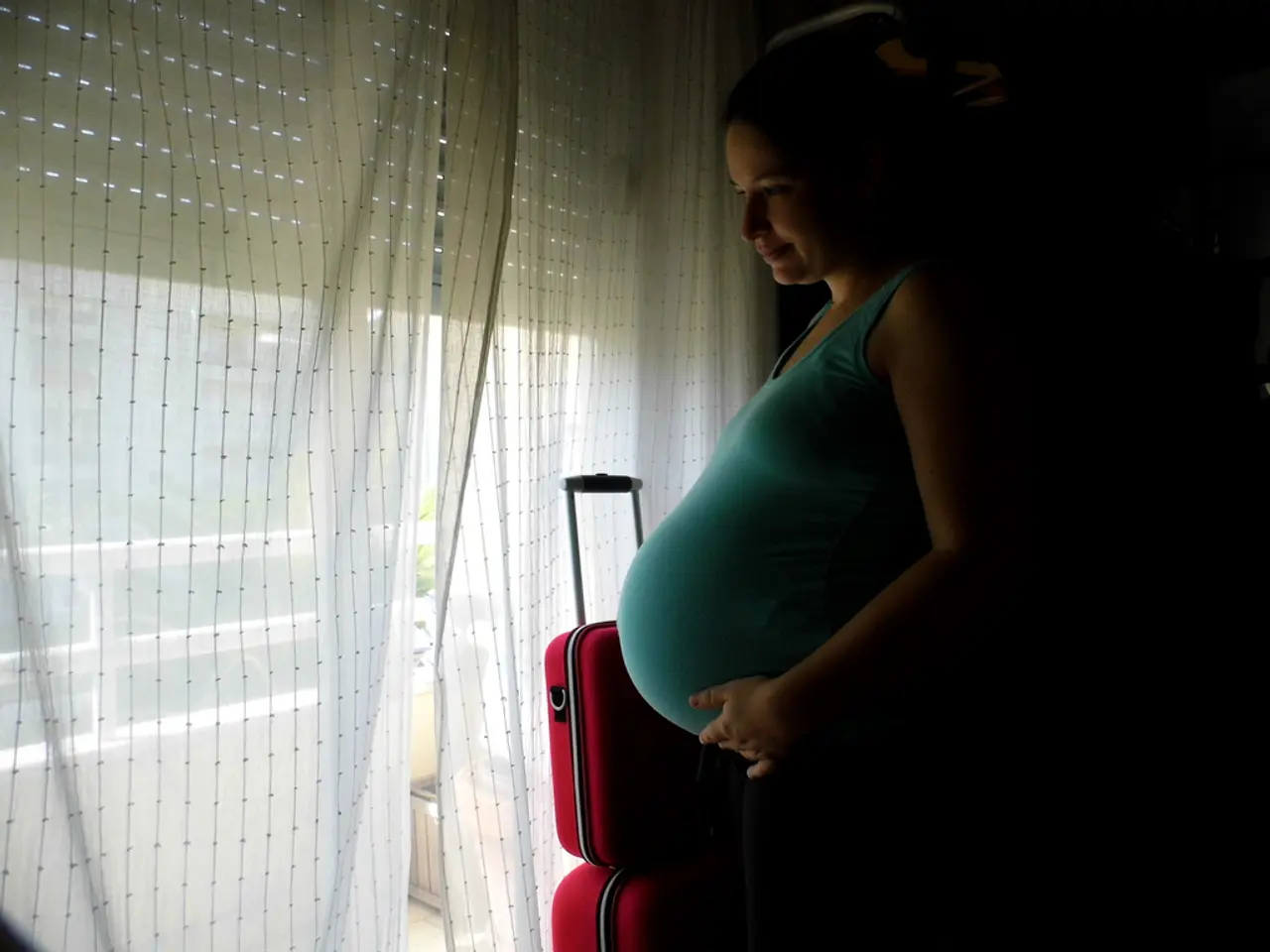Pregnancy Anemia: Understanding Different Types, Symptoms, and Other Key Points
Common Types of Anemia During Pregnancy and Their Associated Risks
Anemia is a common condition during pregnancy, with iron deficiency anemia (IDA) being the most prevalent type. Here's a look at the common types of anemia that can affect pregnant individuals, their causes, and the associated risks for both the mother and the fetus.
Iron Deficiency Anemia (IDA)
IDA is the most common type of anemia during pregnancy, often caused by insufficient iron intake or increased iron demands due to fetal development and expanded maternal blood volume.
Dilutional Anemia of Pregnancy
Dilutional anemia of pregnancy is a physiological decrease in hemoglobin concentration due to plasma volume expansion exceeding red blood cell mass increase. While not true anemia, it is often clinically considered.
Megaloblastic (Vitamin B12 and Folate Deficiency) Anemia
Megaloblastic anemia is caused by deficits in folic acid or vitamin B12, affecting red blood cell production. Although less common than iron deficiency, it can still pose a risk during pregnancy.
Hemolytic Anemia
Hemolytic anemia includes conditions where red blood cells are destroyed prematurely. Examples include hemoglobinopathies such as thalassemia and erythroblastosis fetalis (hemolytic disease of the newborn caused by maternal immune reaction).
Associated Risks for Mother and Fetus
Maternal anemia during pregnancy can lead to several risks for both the mother and the fetus.
For Mothers:
- Increased fatigue and susceptibility to infections due to reduced oxygen transport.
- Higher risk of antepartum and postpartum hemorrhage, pre-eclampsia, puerperal sepsis, and cardiac failure.
- Complications like abnormal uterine bleeding (AUB) exacerbate risks and can worsen anemia during pregnancy.
- Subsequent pregnancies with inadequate replenishment of iron stores increase anemia risk.
For Fetuses and Neonates:
- Low birth weight (LBW) due to decreased oxygen delivery to the fetus, placental, and uterine tissues leading to tissue and cellular dysfunction.
- Placental dysfunction and poor fetal growth from nutrient deprivation linked to maternal anemia.
- Risk of hemolytic disease (erythroblastosis fetalis) in cases of immune-mediated hemolytic anemia.
Prevention and Management
Preventing and managing anemia during pregnancy is crucial. Folic acid is recommended for people to take daily to prevent folate deficiency, even if they do not plan on becoming pregnant. Good nutrition is the best way to prevent anemia during pregnancy, with foods high in iron such as red meat, dark green leafy vegetables, eggs, peanuts, and fortified cereals being beneficial. A doctor will test for anemia at the first prenatal visit and possibly again 4-6 weeks after delivery. If anemia is detected, a referral to a hematologist may be made and iron supplements may be prescribed.
It is important to have enough iron and folate before becoming pregnant, as well as during and after pregnancy, to prevent neural tube defects. A person should seek advice from a doctor or midwife before taking any new supplements.
Conclusion
Anemia is a common condition during pregnancy, particularly during the second and third trimesters. Mild anemia during pregnancy is common, but severe anemia can increase the risk of premature birth, low birth weight, and blood loss during labor. With proper screening, prevention, and management, the risks associated with anemia during pregnancy can be significantly reduced.
- Iron deficiency anemia (IDA) is the most common type of anemia during pregnancy, often caused by insufficient iron intake or increased iron demands due to fetal development and expanded maternal blood volume.
- Dilutional anemia of pregnancy is a physiological decrease in hemoglobin concentration due to plasma volume expansion exceeding red blood cell mass increase.
- Megaloblastic anemia is caused by deficits in folic acid or vitamin B12, affecting red blood cell production.
- Hemolytic anemia includes conditions where red blood cells are destroyed prematurely, such as hemoglobinopathies like thalassemia and erythroblastosis fetalis (hemolytic disease of the newborn caused by maternal immune reaction).
- Maternal anemia during pregnancy can lead to several risks for both the mother and the fetus, including increased fatigue, susceptibility to infections, higher risks for antepartum and postpartum hemorrhage, pre-eclampsia, puerperal sepsis, and cardiac failure for the mother.
- For neonates, anemia during pregnancy can result in low birth weight, placental dysfunction, poor fetal growth from nutrient deprivation, and risk of hemolytic disease in cases of immune-mediated hemolytic anemia.
- Preventing and managing anemia during pregnancy is crucial, and can be achieved through folic acid supplements, maintaining a healthy diet rich in iron, and regular screening by a doctor.
- It is important to have enough iron and folate before becoming pregnant, as well as during and after pregnancy, to prevent neural tube defects.
- With proper screening, prevention, and management, the risks associated with anemia during pregnancy can be significantly reduced.
- Anemia is a common condition during pregnancy, particularly during the second and third trimesters, and severe anemia can increase the risk of premature birth, low birth weight, and blood loss during labor.




